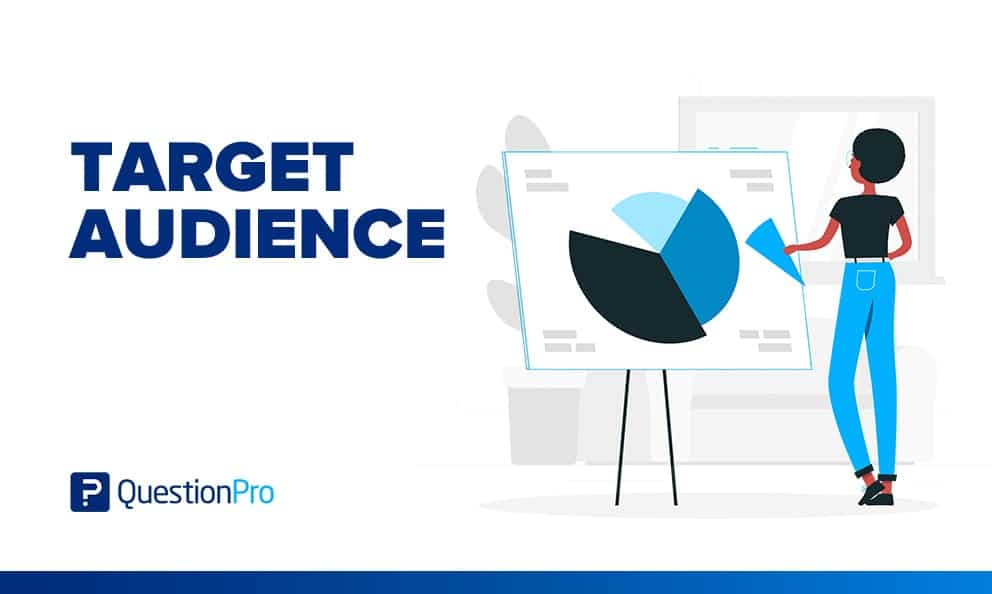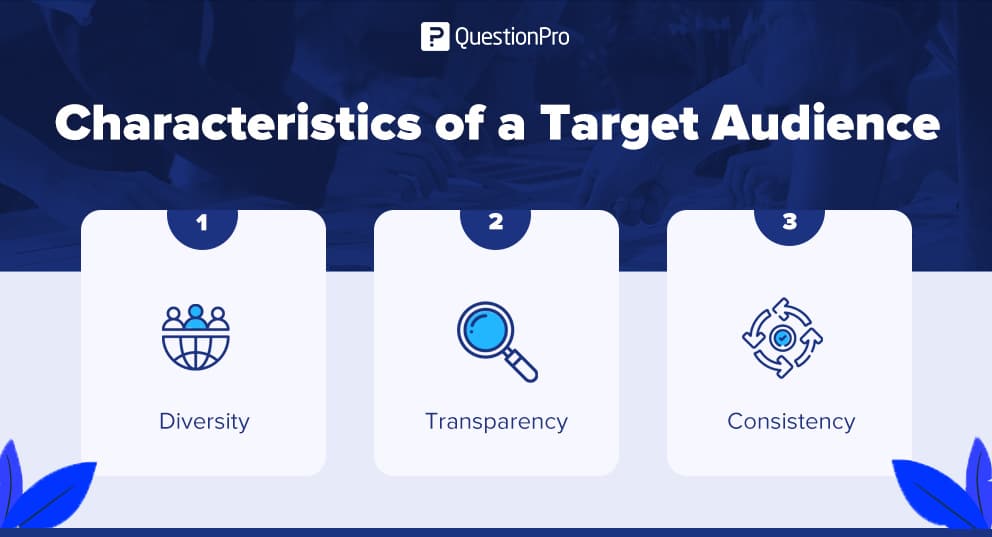
The target audience is the demographic cut of a specific group. It is defined by elements such as age range, gender, geographical location, educational level, purchasing power, social class, and consumption habits in the target market. Knowing this data is the first step in a good marketing strategy since it provides information about our ideal client.
Identifying the target audience is critical because it is the starting point of any effective marketing campaign. It also directs the research process and ensures that the study’s findings reflect the needs and preferences of the intended people who receive them.
Researchers can adjust their methodologies, data collection strategies, and analysis approaches to efficiently capture valuable insights by thoroughly evaluating the target audience’s demographics, behaviors, and distinctive qualities.
The target audience serves as a compass that guides the research study toward producing relevant, applicable, and meaningful results. Let’s discuss it.
What is a target audience?
A target audience refers to a group of people with common interests, demographics, and behavior. Market researchers need to collect consumer behavior and feedback on certain products and services.
Collecting feedback from random people who aren’t your target customer or those with no interest or knowledge about the research subject will not help you solve problems. Targeting the right people for your research is crucial to gain valuable business insights. Analyzing your target audience is an essential part of building your marketing strategy.
Types of target audiences
Knowing how to look for your target audience is critical to the success of your marketing efforts. You can define your target audience based on various attributes. Gender, age, education, and income are just a few examples of your audience segmenting.
For the best research results, divide these audiences into three categories – demography, interests, and purchasing intentions.
Audience based on demography
Demographics are socio-economic factors that describe individuals. Demographic factors include attributes like age, education, geographic location, gender, income, geographic segmentation, and so on.
For example, for conducting a research study on the impact of the pandemic on young students, target students between the age of 18-24, both male and female, from counties with a population of more than 25,000.
Audience based on purchase intentions
E-commerce businesses use a lot of purchase intention data. They must possess this crucial information to understand potential customers’ buying intentions and interests.
For example, researchers group individuals based on the products they look at or are interested in. This helps them target individuals to capture their feedback on the expectations of the products and services to enhance them further.
Audience based on personal interests
Interests make up an individual’s hobbies, passions, behavior, and things they read about and look for. It can be anything from movie types to music genres, to cars, books, and dance, to name a few.
For example, you can offer a new action movie to action movie enthusiasts and get their feedback on different parameters you set to collect genuine feedback.
Characteristics of a target audience
Researchers must sample the specific target audience to make inferences about the entire population. It is impossible to survey the whole population due to logistical concerns, budgetary limitations, and time constraints. Dividing the entire population into smaller bits and drawing inferences from them is the most scientific way of researching a large population.
The research results’ quality directly depends on the intended audience. Your market research will yield actionable results if you get the target audience mix right.
Here are three attributes that researchers must keep in mind to create a sample from their targeted audience:

Diversity
Always ensure the sample is diverse. Ensuring the diversity of a sample can be difficult in some cases because it is difficult to reach your target audience or some portions of the population or convince them to take part in the survey.
For a sample to represent the population truly, it must be diverse. A sample that fails to be diverse and representative of the entire population has serious research consequences.
Transparency
The structure and the size of the population depend on various factors. Researchers must discuss these constraints to maintain a level of transparency about the sample selection procedures. Researchers must be transparent so that the survey results can be viewed with the correct perspective.
Consistency
Researchers must understand the population thoroughly and test the sample’s consistency before launching the survey fully.
This is extremely crucial for research studies that monitor changes across space and time, especially where we need confidence that any variation we notice in our research data reflects a similar trend across comparable and consistent samples.
Determining a sample size from your target audience
In research, it is impossible to survey your target audience. It is also not advisable to target everybody to find your target audience. You must derive a sample from this target to make inferences about the whole population. Here are some tips to determine your sample size from your target audience:
Identify your research objective
First, set your research goals. Know exactly what you want your research to achieve. Will the research be used to make projections about the entire population that reside in your target location? Have clarity about these areas.
Identify your target audience
Choose the population to which you want to generalize your findings. Make sure you have a defined target audience that reflects the population’s characteristics and demographics.
Set precision level
Have an expectation in mind about the precision level you want to achieve with your research. You can adjust your sample size based on the size of your population.
Choose a confidence level
A confidence level is proportional to risk. If you want your risk to be minimum, your confidence level must be high, and vice versa. Choose your confidence level on the criticality of the research.
Determine response rate
Ascertain the response rate you’re likely to receive. If your population is huge and you expect a low response rate, increase your sample size. A small sample, especially in a diverse population, will not give you the accuracy you want.
Determine the margin of error
Make a decision on an acceptable margin of error for your study. The margin of error defines the maximum level of variability or imprecision in your sample estimates that you may accept.
Calculate the sample size
Statistical formulas or online sample size calculators should be used customized for your research design, statistical test, confidence level, the margin of error, and population size (if finite). These calculators help estimate the sample size needed to fulfill your research objectives.
Do you need help to calculate the size of your sample? Don’t worry; we have created a free tool to do that calculation for you.
Importance of target audience in sample size determination
The target audience is important in choosing the right sample size for a research study. Understanding the significance can assist researchers in ensuring the generalizability of their findings, achieving sample representativeness, and customizing the research design to address the needs and characteristics of the audience successfully.
Impact on the Generalizability of Findings
The target audience is the specific group of people to whom researchers seek to generalize their findings. It is critical to select a sample that appropriately represents the target audiences in order to generate robust and applicable results.
The larger the sample size, the more likely it is to capture the diversity and heterogeneity within the target audience, enhancing the generalizability of the findings to the larger population.
Influence on Sample Representativeness
The sample’s representativeness is critical for generating correct findings and valid inferences about the target audience. The sample should sufficiently reflect the demographic, socioeconomic, geographic, and other important features of target audiences.
Researchers can improve the validity and reliability of their research findings by considering the variety of the target audience and ensuring proper representation within the sample.
Customizing the Research Design to the Target Audience
Specific research strategies and approaches may be required to address the needs and characteristics of different target audiences effectively. Researchers can develop culturally sensitive, linguistically suitable, and relevant surveys, questionnaires, or experiments by studying the distinctive features, habits, or preferences of the target audience.
Customizing the research design to the target audience increases participant engagement, data quality, and the relevance of the study’s findings.
Conclusion
Choose your target audience appropriately. Get it right in the first go. Avoid re-researching to save time and costs. Also, with some marketplaces evolving daily, research conducted in today’s scenario will not hold in the foreseeable future.
Knowing our target audience and correctly defining it is essential to draw up a business strategy that is as effective as possible. In addition, it gives us an advantage over our competitors when targeting actions toward those users who are potential customers.
Try QuestionPro’s extensive audience network. With a pool of 22+ million mobile-ready and double-opted survey respondents, ensure you get access to high-quality insights for accurate decision-making.







